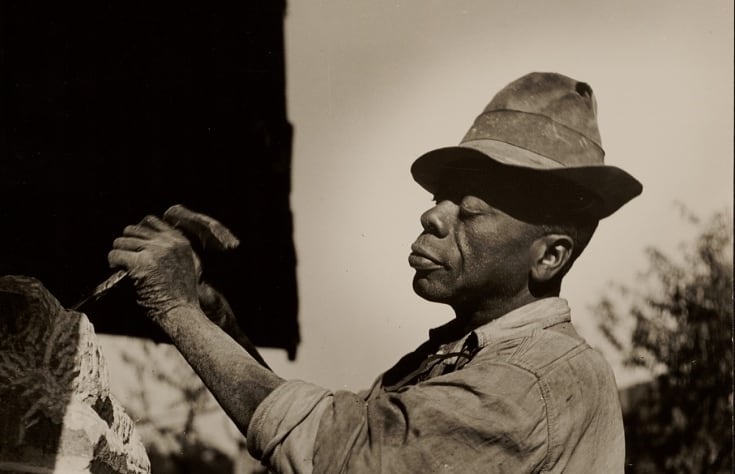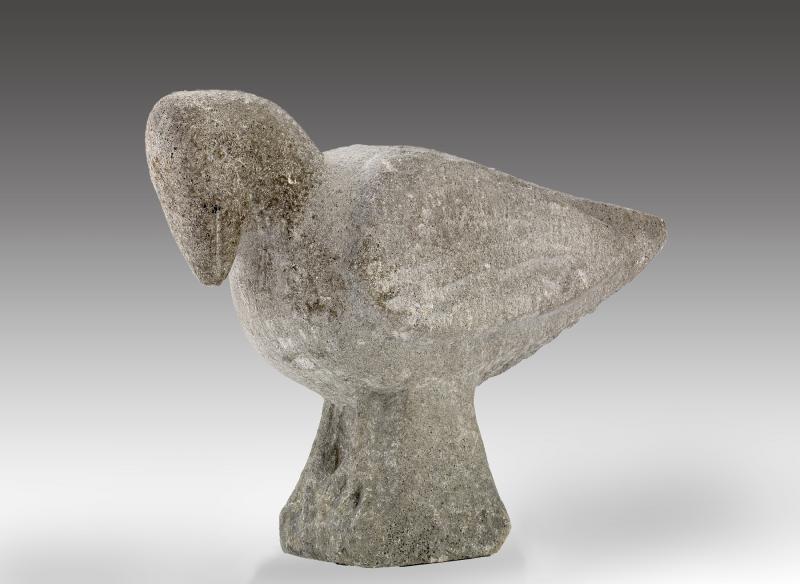Articles and Features
The Checklist, Vol. 4: William Edmondson at The Museum of Modern Art, New York, 1937
William Pym, The Checklist, Volume 4
Art history, like world history, looks different depending on where you’re standing and what matters to you. The monolithic western canon has been chiseled into a prism, absorbing and reflecting new narratives and new histories. This is a good thing. Fashion, a sexy blur, drives the conversation about contemporary art in culture, and consensus is rare and temporary. This is a fine thing. Money and the art market tie us in knots and cloud our judgement, because the latter is easily manipulated by the former. This is a bad thing. Mush all these factors together, and a solid art history seems both more elusive and more necessary than ever. This column, The Checklist, looks at an exhibition from the past via facts that cannot change: artwork, space, audience, a moment in time. The goal is to cut through the noise, and to remember that art is a gift.
William Edmondson
The Museum of Modern Art
New York
October 20 – December 1, 1937
The modern art museum — a place for the art of now, rather than yesterday — was a concept that had to be invented. The natural state of a historical art institution was as a place of wonder and admiration, and the art experience was linked to dominion, religion and class. To be an art lover was to commune with undeniable, immovable icons. The modern art museum sought to make this institution like an organism: reactive to its audience and their moment, moving at the tempo of modern life. Dreamed up and founded by three Gilded Age aristocrat lady collector-connoisseurs, the museum we now call MoMA opened, four days after the Wall Street Crash, in early November 1929. Modernism of this time was adventurous and full of optimism about what the 20th century would become. This month’s checklist looks at a bump on that journey via the 1937 exhibition at MoMA of self-taught Tennessee stonecarver William Edmondson.
*
Edmondson started making sculpture in the 1930s, around the age of 60, after a life of work. He carved largely in limestone discarded from demolished homes. First tombstones, then people, birdbaths, figures from scripture, critters. His works covered his yard and many homes of the Edgehill neighbourhood of Nashville where he lived. A few years into this late-life practice, poet-bohemian Sidney Hirsch saw and fell in love with Edmondson’s work on a walk, and quickly hipped his coterie of friends and fellows around nearby Vanderbilt University. Through this crowd, Louise Dahl-Wolfe, the legendary photographer then on staff with Harper’s Bazaar, met and shot Edmondson in 1937. Her pictures were deemed unpublishable by Bazaar founder William Randolph Hearst, an unvarnished racist, and found their way to Alfred H. Barr Jr., the first director of MoMA. The following autumn, there was a show of 12 of Edmondson’s works in an alcove gallery at the museum. Beside the impact of the works — they are instantly recognizable and original, and quickly elicit devotion — there was considerable serendipity to Edmondson’s rapid route to MoMA. Suddenly it happened. It’s the sort of thing that Edmondson, an observant man, would likely attribute to God. Indeed, it feels fitting to consider Edmondson’s appearance in New York as a revelation, rather than a discovery. They revealed themselves to a series of people on their way to MoMA, where they revealed themselves to the public.
The untrained stonecarver operated so far from the Academy that his presence in a New York context needed to be carefully set up. Barr did his best. He fed PR sizzle to the New York Times ahead of the opening: “Recognition of the achievements of naïve or self-taught artists is one of the discoveries of contemporary taste,” he told the paper, in a neutral, politic statement, entirely in line with the young museum’s mission of evolution. There was no precedent for this show among a cosmopolitan art audience reared on linear art history defined by education, apprenticeships, fraternities, ateliers and guilds. Edmondson had nothing to do with this narrative. Barr took pride in this fact.
Unfortunately, the conversation fell off a cliff. The show’s brief announcement card sent to members was the only official institutional document of the exhibition. “Simple, almost illiterate, entirely unspoiled,” it said of the artist, who had “never seen a piece of sculpture not his own.” There was both a glassy-eyed wonder and a patrician certainty about where Edmondson belonged, and this would carry over into the dozens of reviews published in newspapers nationwide during the show’s short run, the vast majority of which fell upon the word ‘primitive’ and got stuck there. Two excellent books — the Krannert Art Museum and Menil Collection’s 2004 catalogue for Bill Traylor, William Edmondson and the Modernist Impulse and Among Others: Blackness at MoMA by Darby English and Charlotte Barat — provide damming, detailed summaries of the popular press’ position at the time. The headlines of the artist’s biography got in the way of anything resembling formal art criticism. One review, in the New Yorker, stood out from the rest: “it is likely that after the exhibition closes, on December 1st, they [the sculptures] will soon be forgotten.” They were right. In the end it was a sideshow passing through town.
It would take the rest of the century for Edmondson to find his place. MoMA owns a work now, a modest Nurse donated in 2017, but there has been no second solo exhibition at a major American institution, despite many regional shows. The centerpiece of the 1937 exhibition, Martha and Mary, was discovered in bad shape in the yard of a distant descendent of one of MoMA’s founding trustees a few years ago; it was restored, bought — likely for a high six-figure sum — and donated to the American Folk Art Museum by the extremely popular artist and art lover KAWS. This is a long overdue correction. Edmondson remains, to this day, a figure on the margins.
In understanding what happened, or didn’t happen, in 1937, one might look forward another decade. In 1949, MoMA would do a massive show called Modern Art in Your Life for the museum’s twentieth anniversary. It played freely with the forms of modern life, mixing art and design, advertising, book covers and record jackets, organic forms and geometry and everything in between. The MoMA was getting groovy, already anticipating pop and the wild infection of art in American culture to come. The show had an openness to highlighting art wherever it could be found, and understanding how forms work, how they affect our brains and our daily lives. No rules, only eyes. Anything was possible if you allowed art in your life.
In 1937, with Edmondson, there was simply no language in place that could trump the monolithic top-down colonial view of the black primitive. However well intentioned the critique, the only words that existed were words of diminishment and reduction. The core units of Modernism in the artist’s work, which could happily take their place in a gallery alongside, say, Brancusi or Henry Moore, were not afforded the freedom to join the conversation of modernity in America. Ultimately, Edmondson’s exhibition confirms why MoMA needed to exist.


